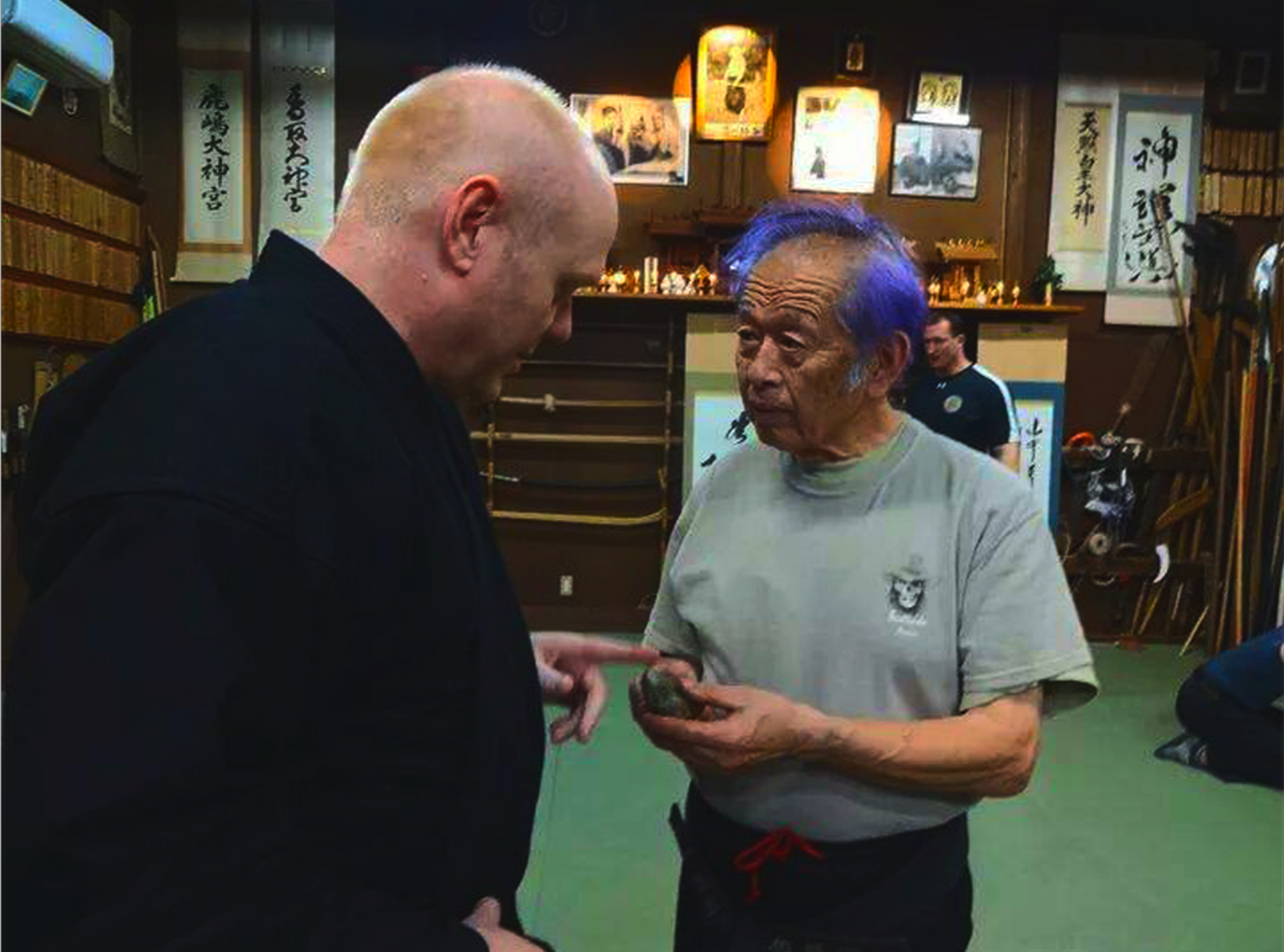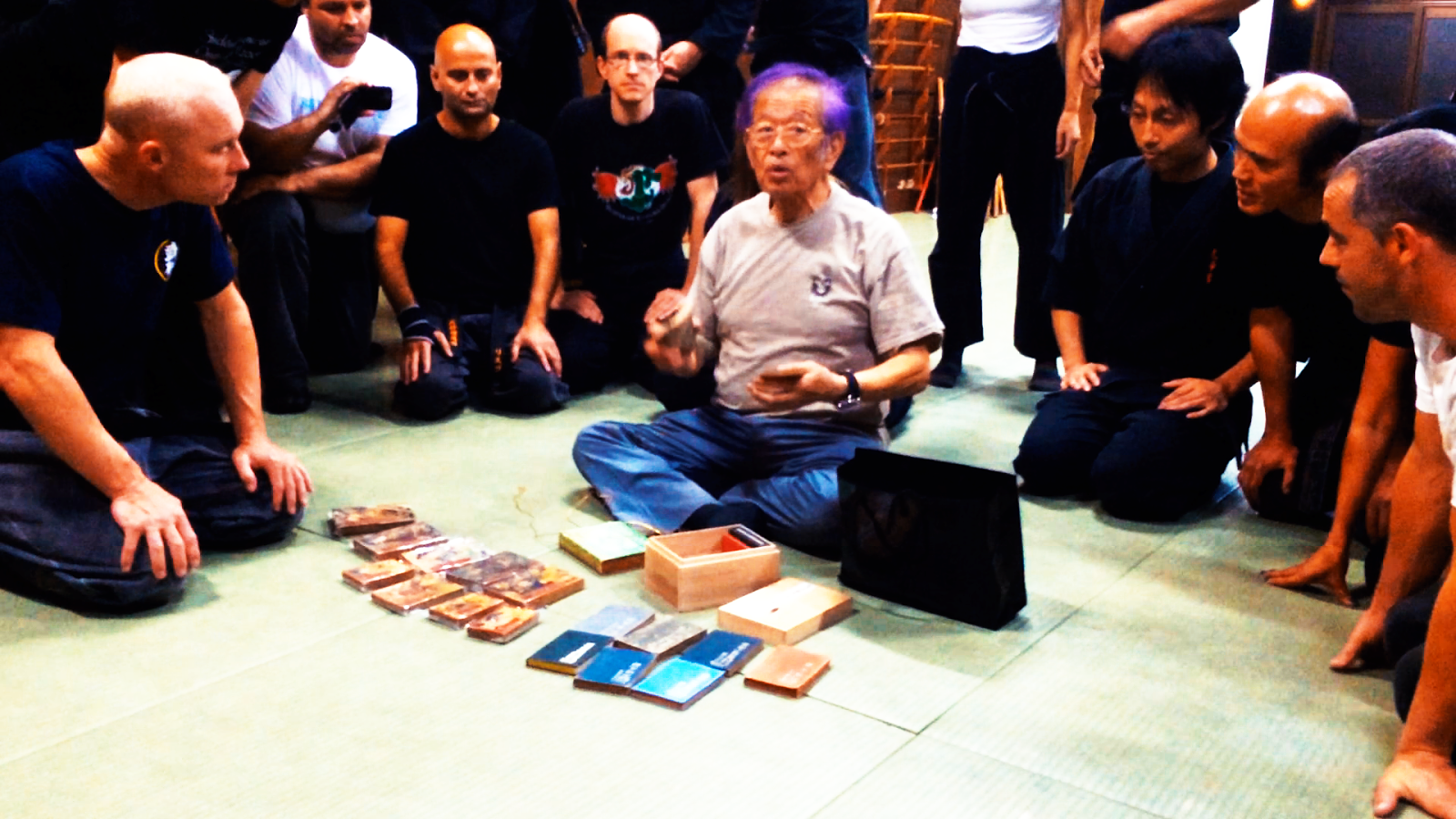虚実 Kyojitsu: A Path to Natural Power
From Bujinkan Santa Monica by Michael
 |
| Soke is a Trickster, photo by Michael Glenn |
A weight from the 忍び杖 shinobi-zue swings through the air, barely missing the overhead lights. It continues wrapping around Soke's attacker until he and the sword are wrapped up. But Soke doesn't appear to move at all!
He finally drops the bo, and his attacker collapses in a tangled heap. What just happened? How can any of us in the dojo use that same feeling?
Soke called this 自然力 shizenryoku, natural power or the power of nature.
One of the secrets to this type of natural power is understanding power itself. Power that is not from your own effort or what you put out. It is how you are felt, or the effect you have. The perceptions of the opponent are what matter.
This is the heart of 虚実 kyojitsu.
I go to Japan to study the yearly themes and more. But I never know what I will learn when I arrive. During my trip last month, I learned about some of the paths that the power of 神韻武導 Shin Gin Bu Dou may take.
You may be lost about this year's theme. Then lighting strikes in the night. In that brief flash, you see a path. Then darkness again. Hatsumi Sensei encouraged us to follow a path of natural power.
Soke describes this 自然力から神の力 shizenryokukara kami no chikara. This power of kami that arrives from the force of nature. That's the path or channel by which we experience this power. There's a natural power or strength from kami, a non-physical power. That power channels down from above and you should follow it.
But tonight in the dojo, Hatsumi Sensei was talking about skipping stones across water. And the moments between skips, The 間 Aida of Skipping a Stone Across Water . He said we should alternate between small kyojitsu and big kyojitsu in this very small moment or aida in the kukan. And each moment is connected in this continuation.
He added that this year is about 自然力 shizenryoku or the power of nature like a stone skipping across water. We should apply kyojitsu in this way. After Soke wrapped his opponent up with the chain and bo, he said,
"This year's theme is to not use our weapons. Or not to beat up the opponent. Just let the opponent become bound up (or bounded) by his own technique."He told us that to be able to apply kyojitsu tenkan you have to separate yourself from your own desire. And then follow the path of natural power. Maybe it's the path you see in a flash of lightning.
Hatsumi Sensei said that the very survival of the Bujinkan is because it has been passed from one Soke to the next in this way. Down through the path of the Kami. Along this natural line of power.
This is the lineage and how it is inherited.



















